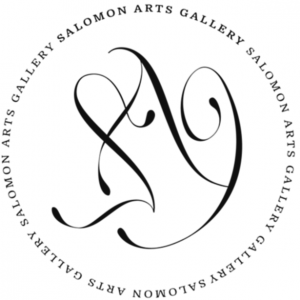“IN PURSUIT OF MEANING”- Alexander Ney, February – March, 2024

EXHIBITION: February – March, 2024
I first met Alexander Ney in 1978 at The Russian Tea Room. I was responsible for the window displays there, and also, for a period of many many years, at Tiffany’s. I n the course of my work, I came into contact with a number of well-known and important artists, such as Andy Warhol, Jasper Johns and Robert Rauschenberg. I have as much admiration for Mr. Ney as for those others. In fact, I think he was in my windows at Tiffany’s more than any other single artist because I truly believe in him and in his art.
I have visited his studio and seen the tremendous quantity and variety of his work, and I have stayed in personal and professional contact with him for these many years because of the great esteem in which I hold him. I consider him an extremely important contemporary artist.
Gene Moore (1910–1998)
Legendary Designer and Vice President, Tiffany & Co.
New York City, April 1996
ThE MYThOPOETICAL LANGuAGE OF ALEXANDER NEY
An example is extracted from the patriarchal bag of ancient consciousness
Osip Mandelstam
The visuals of archaic layers of consciousness find a special vector in contemporary culture. Its phenomena lives on in the focused picturesqueness of the art of Alexander Ney, allotting its senses by a paradoxical intellectual sensuality. The objects of plastic arts by the artist are inseparable from the archetypes of ancient cultures, yet are multiplied by postmodern reflection. They are enriched by the great traditions of Egypt, Assyria, and Babylon. Their forms “recall” the fundamental principles of the Pre-Columbian cultures of the Americas, but affix their gaze to unknown cosmic civilizations.
Alexander Ney masters the lost technologies, his encyclopedic memory of cultures is astounding; but his work does not only feed knowledge and information. It is submerged in a unique artistic intuition, where the creative act signifies the transformation of material. The imagery of the art of Alexander Ney naturally develops akin to the formation of a crystal, subordinated to core personal energies. They are born from an indivisible genetic unit, erecting a future structure in the organic world, similar to the process of bimolecular evolution. This artistic system coordinates legendary “head-objects,” proving to be capable of converting their space of plasticity into “text,” into record, into coded matrix information.
The rectangles, circles, squares of this computed punch-card seemingly demonstrate the multidimensional metaphysics of Logos, a volumetric information system. Visually, this image is similar to the energetic structure of a thought that is being born, pulsated by Suprematist “written notes.” This breathing, magical construction undoubtedly belongs to iconological imagery and meditative potential. Its function is realized as a mediator, a liaison that achieves connections, contacts and dialogues between worlds of both organic and technological origins, from nature and from civilization. Inverted by their sensual, tactile and geometrical symbolic visibility from the outside, this mediator, the “head,” is a unit of artificial intellect by their cultural axis that connects the classical avant-garde, in particular, the atomized three-dimensional “heads” of Pavel Filonov, and the new radicalism of forms created in the descriptive system of nanotechnologies. This pulsatory information network, which wholly penetrates Alexander Ney’s objects, is intuitively “superimposed” by the artist, and, being
subordinated to an internal rhythm, reveal its topography, its points – like an acupuncture map. Its structure at the visual-philosophical level opens and extends to the three-dimensional semantic context, remaining fixated at the highest states of artistic consciousness. In witness thereof, the textual plasticity of Alexander Ney converges with immutable persuasiveness to matters akin the speech of a poet, allowing the geometric “optics” of three-dimensional structures compare to Osip Mandelstam’s instrumentalities in his studies of Dante’s poetry, where any image “is a light, and its meaning beams in many different directions.” Alexander Ney concerns himself with the meaning of forms of reality in the tradition of “the grand style,” and opens a cosmic “view from above,” while being simultaneously immersed in internal calculations. Using the analytical methods of Osip Mandelstam, it is possible to say that the artist literally touches “the crystalline structure of a rock in order to study its impregnation, eyeing” and scrutinizing in its “armored signalization” and approaching “a dissection of the very essence of future time.”
Looking back, Alexander Ney indicates a particular point where time and space is born, reconstructing its singularity. Tightening itself, it finds its critical mass, forming structural material, gathering “the focus” of new artistic sight. Being erected in special proportional numbers, the atomized elements of Alexander Ney’s objects make them capable of overcoming their “concrete” properties, and give genesis to a nascent “tree of life.” These even can be particles of sand, small pebbles, colored tape or paper – but each time, they awaken with internal life and are born to breathe. They reveal their imagery and appearance, which mandates the distinct senses of plasticity and a deeply personal language.
Every cell, every point of the surfaces of Alexander Ney’s works are converted into a glimpse of the source of creation, into the hiatus of revelation, and, naturally, the plasticity’s technology is then transformed into a universal visual philosophy.
Text from:
MINISTRY OF CULTURE OF THE RUSSIAN FEDERATION
NATIONAL CENTRE FOR CONTEMPORARY ARTS
MOSCOW 2009

SALOMON ARTS GALLERY
83 Leonard Street, 4th Floor,
New York, NY 10013
Viewing by appointment only.
Please contact us at 212-966-1917
or via email at gallery@salomonarts.com
